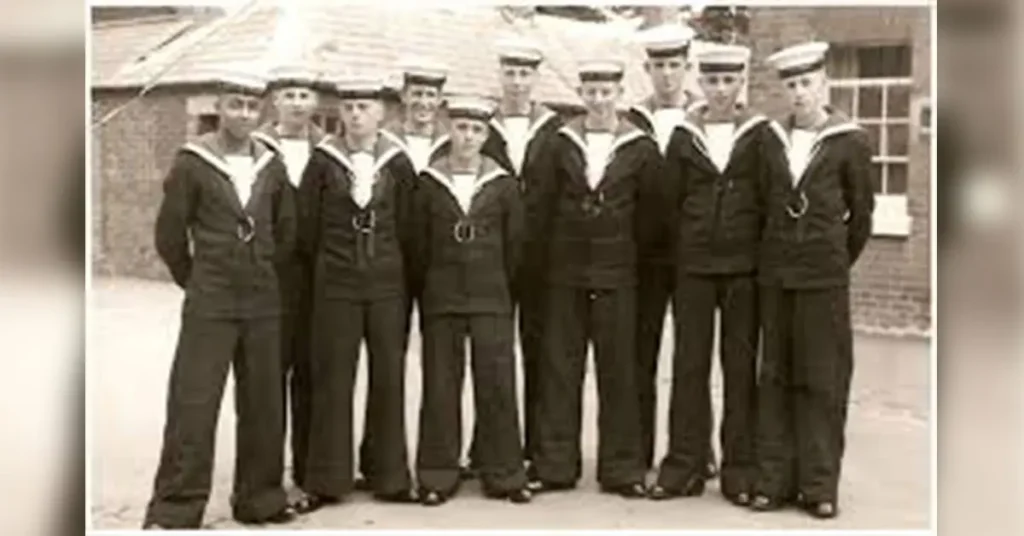Fashion reflects societal shifts and revived styles that resonate with new generations. Among these continuous trends are flared trousers, also known as bell bottoms. However, these pants hold much more history than what meets the eye. Throughout maritime history, few garments have encapsulated the spirit of sailors quite like bell-bottom trousers. Their wide, flared legs serve as a functional adaptation to life aboard ship and a symbol of resilience and adaptability. Like their wearers, these trousers navigate the waters of practicality and identity, making them a statement to the sailor uniform.
The origins of bell-bottoms in the 19th century began as an era marked by exploration and discovery. Since there was no standard uniform then, bell bottoms became popular. They were transformative because as sailors ventured into uncharted territories, their clothing mirrored their utilitarian and expressive experiences. Initially worn by U.S. Navy personnel in the 19th century, the flared design allowed sailors to easily roll up their pants while swabbing decks, providing greater mobility aboard ships. They also had a unique safety feature in which the wide legs could be knotted and inflated as a makeshift flotation device. Bell bottoms became a visual marker of naval identity, merging functionality with a tradition spanned decades.
The resurgence of bell bottoms in the 1960s and 70s coincided with a cultural revolution that challenged traditional norms. The hippie movement embraced these trousers, which were often sourced from thrift stores brimming with a surplus of Navy styles. Iconic figures like Sonny and Cher epitomized this trend during their television appearances, showcasing how bell bottoms became synonymous with a youthful, rebellious spirit. Additionally, variations like loon pants and elephant bells captured the attention of disco enthusiasts, further amplifying the dramatic flair associated with the style.
The history and functionality of bell bottoms is a poignant metaphor for adaptation in the face of adversity. As sailors must navigate treacherous waters, people must also learn to adapt their identities in a constantly shifting world. This garment transcends mere fashion; it embodies a survival philosophy, showcasing the human spirit’s capacity for innovation. Bell bottoms are not just garments but an outlook on history, identity, and ideology. Clothing is not just a reflection of our physical selves but a profound statement of our journeys, aspirations, and resilience throughout time.
Works Cited
Berger, Madeline. “A Brief History of Bell Bottoms.” Ragstock.com, 26 Apr. 2018, ragstock.com/blogs/a-brief-history-of-bell-bottoms?srsltid=AfmBOoqwy3H7NkCbTcRdkPZFVEisokK1v-5YLriFa3gwE3bQAlBB0HRF. Accessed 29 Aug. 2024.
Ladis, Lucy. “The History of Bell Bottoms – SMU Look.” SMU Look, 11 Feb. 2022, smulook.com/2022/02/11/the-history-of-bell-bottoms/.
Levi Strauss & Co. “Throwback Thursday: How the Bell-Bottom Got Its Groove.” Levi Strauss & Co, 25 Sept. 2014, www.levistrauss.com/2014/09/25/throwback-thursday-how-the-bell-bottom-got-its-groove/.













